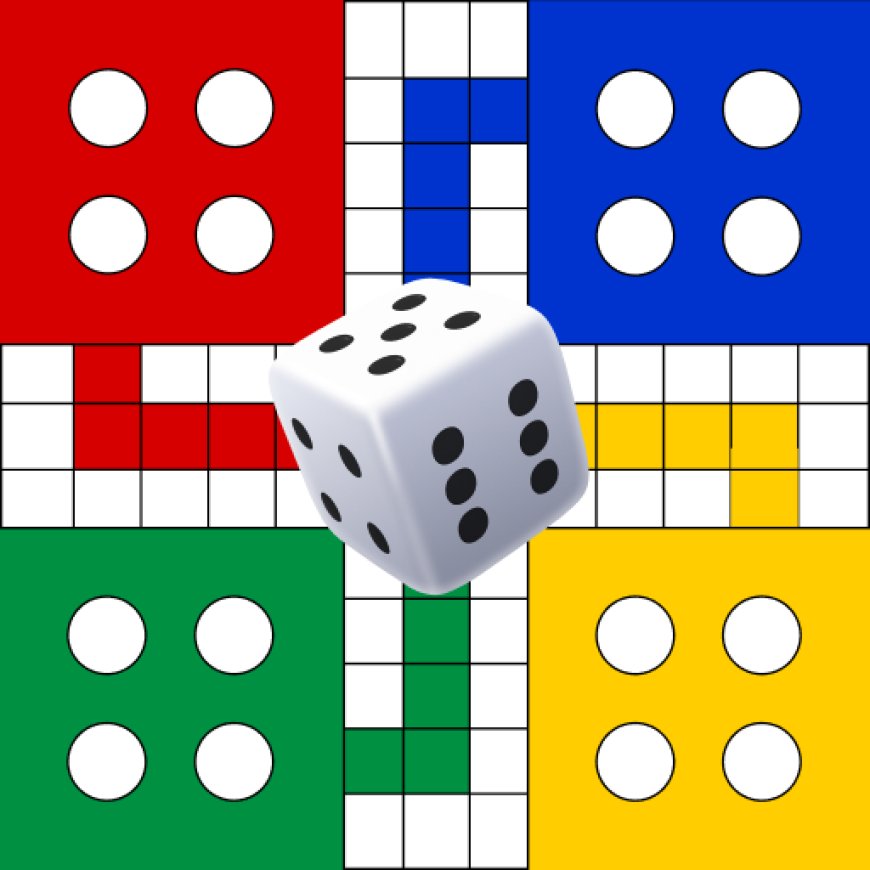What Are the Important Terms Used in Ludo Games?
Ludo, a beloved board game with deep cultural roots in India, has evolved into a global digital phenomenon, enjoyed by millions through apps like Ludo King, Zupee, and Ludo Empire.

Ludo, a beloved board game with deep cultural roots in India, has evolved into a global digital phenomenon, enjoyed by millions through apps like Ludo King, Zupee, and Ludo Empire. Whether played on a physical board or online, Ludo has a unique vocabulary that defines its gameplay, strategies, and rules. Understanding these terms is essential for both new and seasoned players to fully grasp the games mechanics and enhance their experience. Below is a comprehensive guide to the most important terms used in Ludo games, tailored to the Indian context as of 2025.
1. Board
The playing surface of Ludo, typically a square with a cross-shaped pattern. It features four colored paths (red, blue, green, yellow) leading to a central home triangle. Each path consists of a starting base, a track, and safe zones. In online Ludo, the board is digital, often with customizable themes like festive or Bollywood-inspired designs.
2. Tokens (or Pieces)
The four movable pieces each player controls, matching their chosen color (e.g., red tokens for the red player). Tokens start in the players base and move along the boards track based on dice rolls, aiming to reach the home triangle. In digital versions, tokens may have animated effects.
3. Base (or Yard)
The starting area for each players tokens, located in one of the boards four corners. Tokens remain in the base until a player rolls a six to unlock or open a token, allowing it to enter the track. Also called the home square or starting yard.
4. Dice
The six-sided die (or dice in some variants) used to determine token movement. A roll dictates how many spaces a token can move, with a roll of six granting an extra turn and the ability to unlock a token from the base. In online Ludo, the dice is virtual, often with random number generator (RNG) certification for fairness.
5. Track (or Path)
The outer perimeter of the board, consisting of 52 spaces, along which tokens move clockwise from their starting point to their home path. Each players track includes shared spaces and their unique colored path leading to the home triangle.
6. Home Path (or Home Stretch)
The colored, triangular path (e.g., red path for the red player) that branches off from the main track toward the central home triangle. Tokens enter this path after completing a full lap around the board and can no longer be captured once in the home path.
7. Home Triangle (or Home)
The central triangle in the boards middle, the final destination for all tokens. A player wins by moving all four tokens into their corresponding home triangle. In some online variants, reaching the home earns additional points.
8. Safe Zone (or Star)
Specific spaces on the track marked with a star or symbol, where tokens are immune to capture. The starting point of each players track (the first space after the base) is also a safe zone. Safe zones are strategic spots to protect tokens from opponents.
9. Capture (or Kill)
When a player lands their token on a space occupied by an opponents token (outside a safe zone), the opponents token is captured and sent back to their base. The capturing player often earns an extra turn or bonus points in online versions. This is also referred to as cutting or knocking out.
10. Extra Turn
A bonus turn granted when a player rolls a six or captures an opponents token. In some online Ludo game variants, like Zupees Ludo Supreme, capturing or reaching home may also award points instead of extra turns.
11. Six
A dice roll of six, a critical number in Ludo. It allows a player to move a token out of the base onto the tracks starting point or advance an existing token by six spaces. Rolling a six typically grants an extra turn, but in some variants, three consecutive sixes may cancel the turn.
12. Open (or Unlock)
The act of moving a token from the base to the tracks starting point, achieved by rolling a six. A player must open at least one token to begin moving on the board. In fast-paced online modes, tokens may start open to speed up gameplay.
13. Block (or Blockade)
When two or more of a players tokens occupy the same space (outside a safe zone), they form a block, preventing opponents from landing on that space or passing it. Blocks are strategic tools to slow down opponents but can be captured if an opponent lands on the space.
14. Turn
A players opportunity to roll the dice and move a token. Turns rotate clockwise among players, with extra turns awarded for specific actions like rolling a six or capturing a token. In online Ludo, turns may have time limits in fast-paced modes.
15. Points
In some online Ludo variants, like Zupee or Ludo Empire, players earn points instead of focusing solely on reaching the home triangle. Points are awarded for actions like moving tokens, capturing opponents, or reaching home within a time limit or set number of moves.
16. Tournament
A competitive mode in online Ludo apps where players join large-scale matches for cash prizes or rewards. Tournaments often have entry fees and feature leaderboards, with top players winning significant amounts (e.g., up to ?10 lakhs on Ludo Empire).
17. Quick Mode
A faster Ludo variant in apps like Ludo King or Zupee, designed for shorter matches. Rules may include fewer tokens, time limits, or point-based scoring instead of the traditional race to the home triangle. Also called Speed Ludo or Ludo Turbo.
18. RNG (Random Number Generator)
A system used in online Ludo to ensure fair and random dice rolls, certified by regulatory bodies like the All India Gaming Federation (AIGF). RNG certification is crucial for cash-based games to guarantee unbiased outcomes.
19. Wallet
The digital account within a Ludo app where players store their winnings, bonuses, or deposited funds for cash games. Wallets support deposits and withdrawals via UPI, bank transfer, or e-wallets like Paytm.
20. KYC (Know Your Customer)
A verification process required for real-money Ludo games, where players submit ID proof (e.g., Aadhaar, PAN) to enable withdrawals. KYC ensures compliance with Indian gaming regulations and prevents fraud.
Conclusion
Mastering the terminology of Ludo enhances your understanding and enjoyment of the game, whether played on a traditional board or through a digital app. From base and tokens to capture and quick mode, these terms define the strategies and excitement that make Ludo a timeless favorite in India. By familiarizing yourself with these key terms, you can dive deeper into the games nuances, strategize effectively, and fully embrace the thrill of rolling the dice and racing to victory.









































